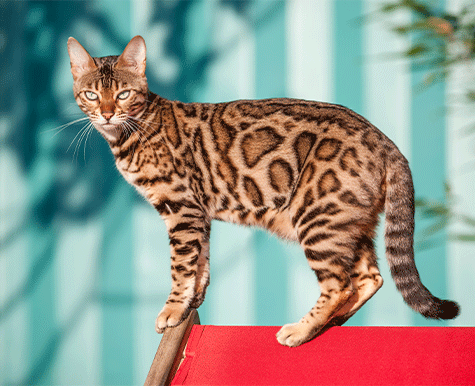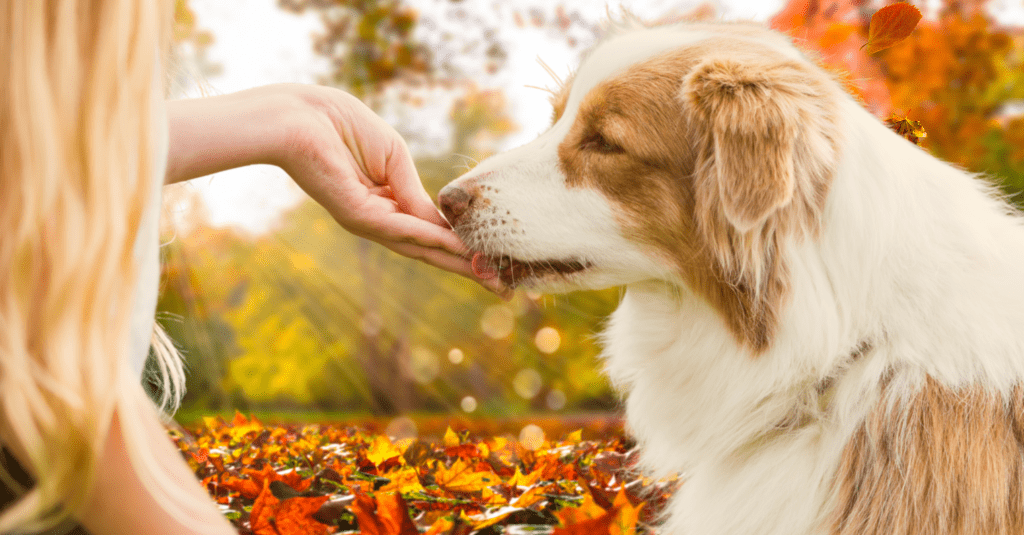






Bengal
 Overview
Overview
Overview of Bengal
Wild on the outside, tame on the inside - Bengal cats are like the Rolls Royce of kitties with a personality to match, thanks to the efforts of the breeder and conservationist Jean Mill! They came into existence by cross breeding domestic cats with Asian leopard cats (Prionailurus bengalensis) to create domestic kitties with the markings of their wild ancestors. Contrary to popular belief, the Bengal cat can get infected with FeLV (like any other kitty) even if their wild ancestor may be immune to it. The Bengal's iconic coat comes in brown, snow, silver, charcoal brown, charcoal black or melanistic in a spotted, bull's eye, marbled, or rosette pattern. Typically weighing 8 to 16 pounds, the Bengal’s silky, thick coat only takes weekly grooming to keep them looking their best!
Common Health Conditions & Recommendations for Bengal
Hypertrophic Cardiomyopathy (HCM):
Is common in older Bengals. It causes enlargement (hypertrophy) of the heart which can lead to blood clots, immobility in the back legs and congestive heart failure. The disease is hereditary, and researchers are working to identify which gene or genes are involved in the development of HCM in Bengal cats.
Recommendations for Hypertrophic Cardiomyopathy (HCM) in Bengal Cats:
Common Health Conditions & Recommendations for Bengal
Pancreatitis:
Is an inflammation of the pancreas that is a gastrointestinal disorder that can affect all kitties. Purebred cats are especially prone to GI tract issues like Pancreatitis.
Recommendations for Pancreatitis in Bengal Cats:
Common Health Conditions & Recommendations for Bengal
Progressive Retinal Atrophy:
Refers to a family of eye diseases which lead to the gradual deterioration of the retina, leading to mild to severe vision loss. This condition is unfortunately quite common in Bengals.
Recommendations for Progressive Retinal Atrophy in Bengal Cats:
 Personality
Personality

Super smart and eager to please, Bengal cats are keen to learn tricks — like a dog — and if you want a weird hobby, try agility training with them! They are super high energy, so activities like jumping through hoops and playing fetch will surely keep your Bengal entertained! Almost every Bengal has an obsession with water. They are known to play in water whenever they can, dipping their paws into dishes and jumping into their pet parents' showers or baths. Households with fish should be aware that Bengals are excellent fishers and, unless socialized young with small animals, may try to hunt anything smaller than themselves. These wild-looking kitties can be great family pets but it is important to socialize them early on with as many people as possible—kids included—to prevent your cat from becoming overly guarded and bonded to one person. Bengals are only recommended for experienced pet parents who have time to entertain their energetic kitties and delight in teaching them tricks and playing together.



 USD
USD
 Canadian Dollars
Canadian Dollars


